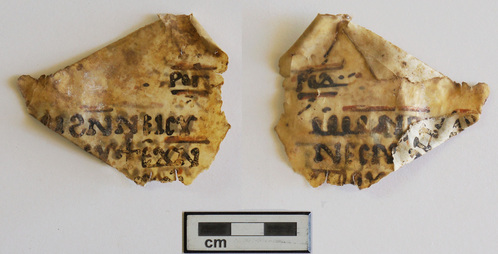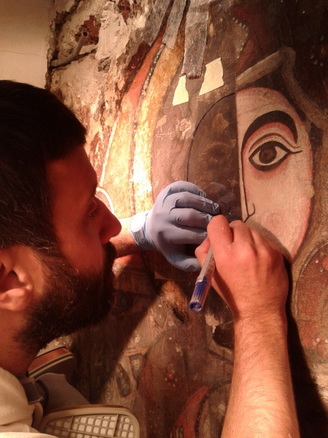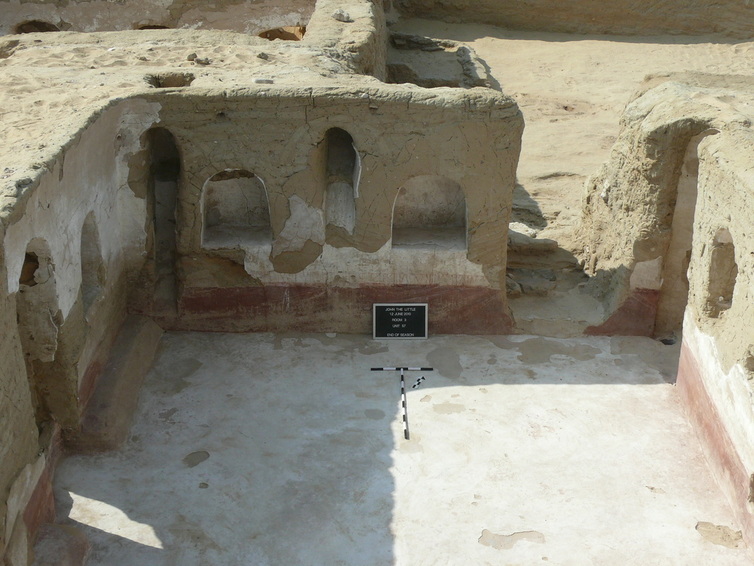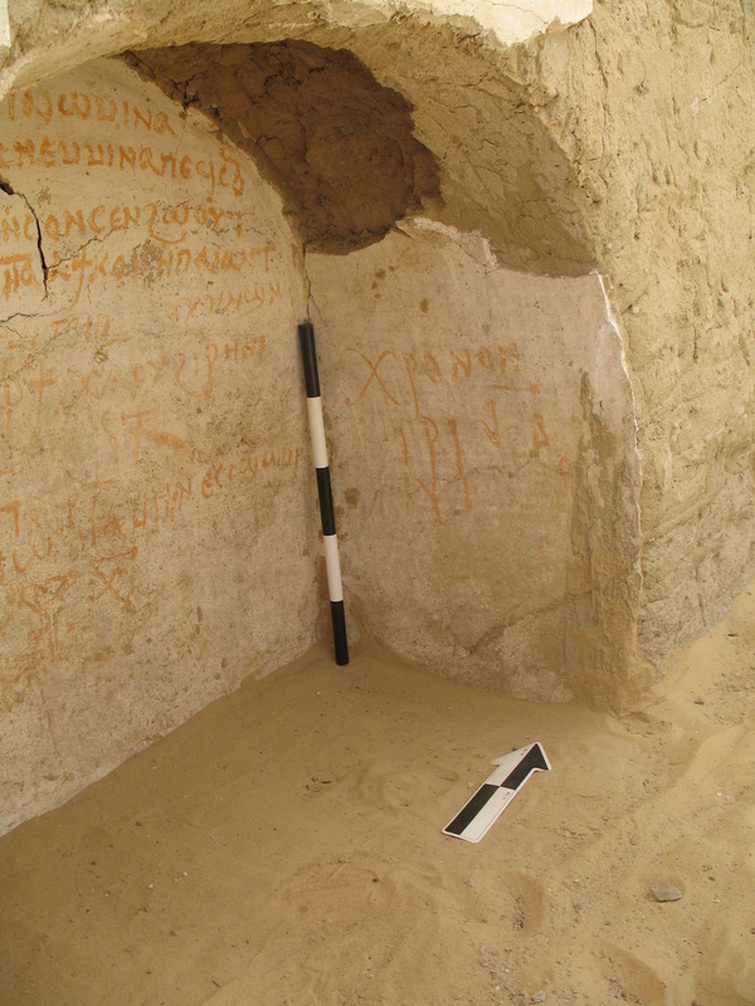 Figure 1. Archaeological work at dawn at the Monastery of John the Little. Photograph by Nicole Kettleshake, June 2007.
Figure 1. Archaeological work at dawn at the Monastery of John the Little. Photograph by Nicole Kettleshake, June 2007. YMAP-North: Monastic Archaeology in Lower Egypt
In 2006, the YMAP team conducted a geophysical survey at the site of Kellia-Pherme in the Delta region, and we also initiated surveys and excavations at the Monastery of John the Little in Wādī al-Naṭrūn (ancient Scetis). Continuing from 2006 to 2012, excavations at John the Little focused on a monastic midden (i.e. trash deposit) and an early medieval mud-brick monastic residence.
The excavated residence at John the Little is organized around a central courtryard and contains kitchen installations, a latrine, and a room (perhaps an oratory) with an extensive program of wall writings (dipinti) and figural paintings, including images of martyrs and monks, and an apocalyptic scene of Christ depicted as a horned Lamb of God.
YMAP-South: Monastic Archaeology in Upper Egypt
In addition to this work in northern Egypt, in 2008 the Yale Monastic Archaeology Project also assumed responsibility for archaeological documentation and conservation at the White Monastery near Sohag in southern Egypt. There, we have focused our attention on archaeological remains related to water distribution and food production and on a tomb chapel related to the fifth-century head of the monastery, Shenoute of Atripe.
 Figure 5. A manuscript fragment from the writings of Shenoute of Atripe discovered in the White Monastery Church. Photograph by Stephen J. Davis, December 2012.
Figure 5. A manuscript fragment from the writings of Shenoute of Atripe discovered in the White Monastery Church. Photograph by Stephen J. Davis, December 2012. In February and March 2015, our work in the church included two urgent conservation initiatives. First, an Antiquities Endowment Fund (AEF) Grant from the American Research Center in Egypt helped support work to stabilize two sections of the church walls that were in danger of collapse. A three-dimensional test scan of the church’s north wall was also conducted to gauge patterns of deformation.
 Figure 7. Conservation of the wall painting of the Virgin and Child in the White Monastery Church. Photograph by Alberto Sucato, March 2015.
Figure 7. Conservation of the wall painting of the Virgin and Child in the White Monastery Church. Photograph by Alberto Sucato, March 2015. Ongoing work in Lower Egypt includes a new project to catalogue Coptic, Arabic, and Ethiopic manuscripts in the Monastery of the Syrians, one of the medieval monastic foundations in Wādī al-Naṭrūn that has remained active to the present day. The library collection contains almost a thousand manuscripts. Cataloguing work began in December 2013, and plans for digitizing the massive collection are currently under discussion. With an eye toward future work in Upper Egypt, YMAP has recently entered into collaborative arrangement with a German archaeological mission from Universität Tübingen to document Coptic-era remains at ancient Atripe, the site of the women’s monastery in Shenoute’s federation, located only about three kilometers south of the White Monastery. The plan is to begin excavations in February-March 2016.
Project Leadership and Support
The Yale Monastic Project was founded by Professor Stephen J. Davis (Yale University) who has served as its executive director since its inception in 2006. Professor Darlene Brooks Hedstrom (Wittenberg University) and Dr. Gillian Pyke (Yale University) have served as the project’s archaeological field directors. YMAP receives generous annual support from the Simpson Endowment for Egyptology and the Yale Egyptological Institute in Egypt, and the project has benefited from its longstanding cooperation with the Egyptian Supreme Council of Antiquities (SCA), as well as the ecclesiastical and monastic leadership of the Coptic Orthodox Church.









